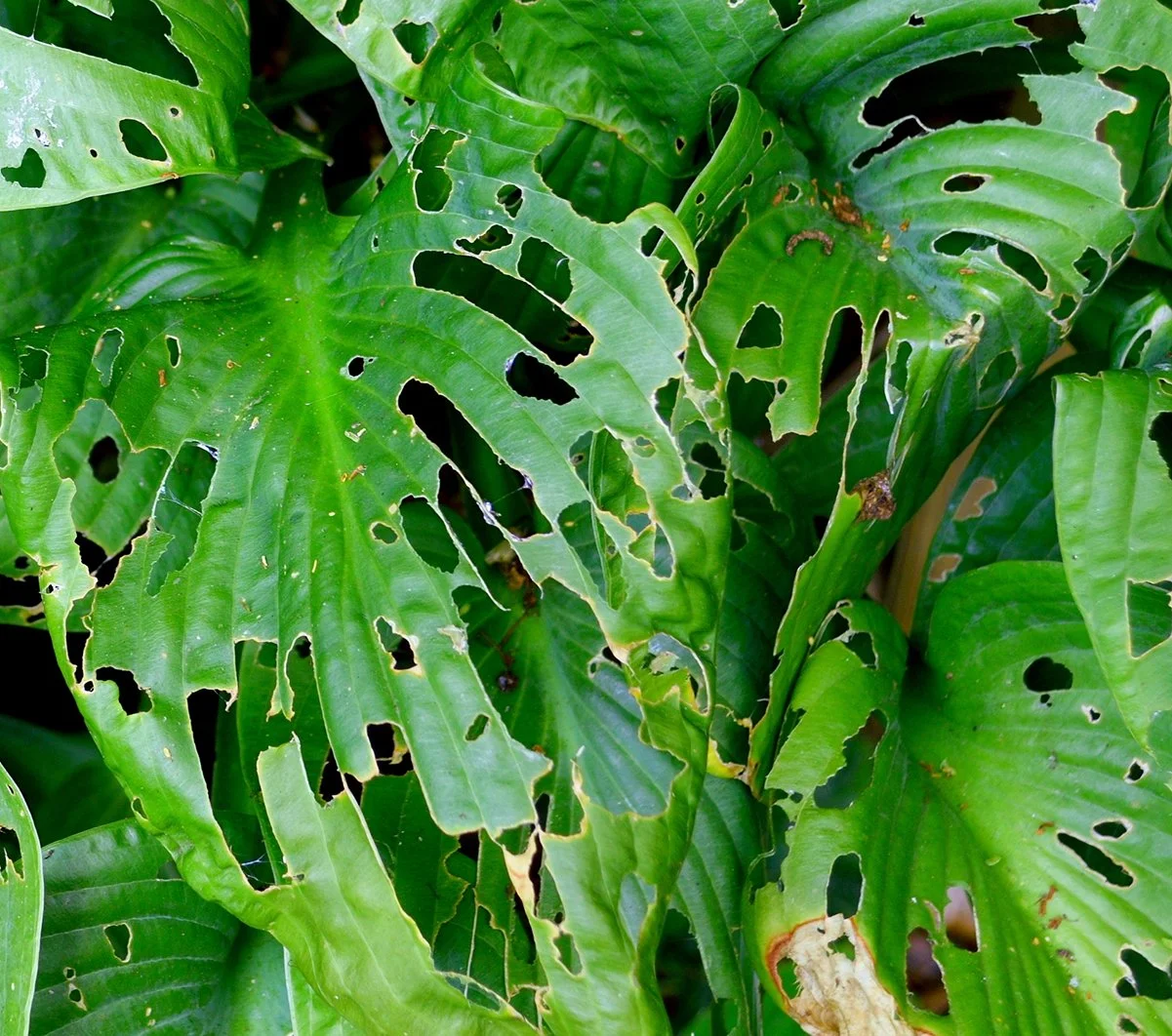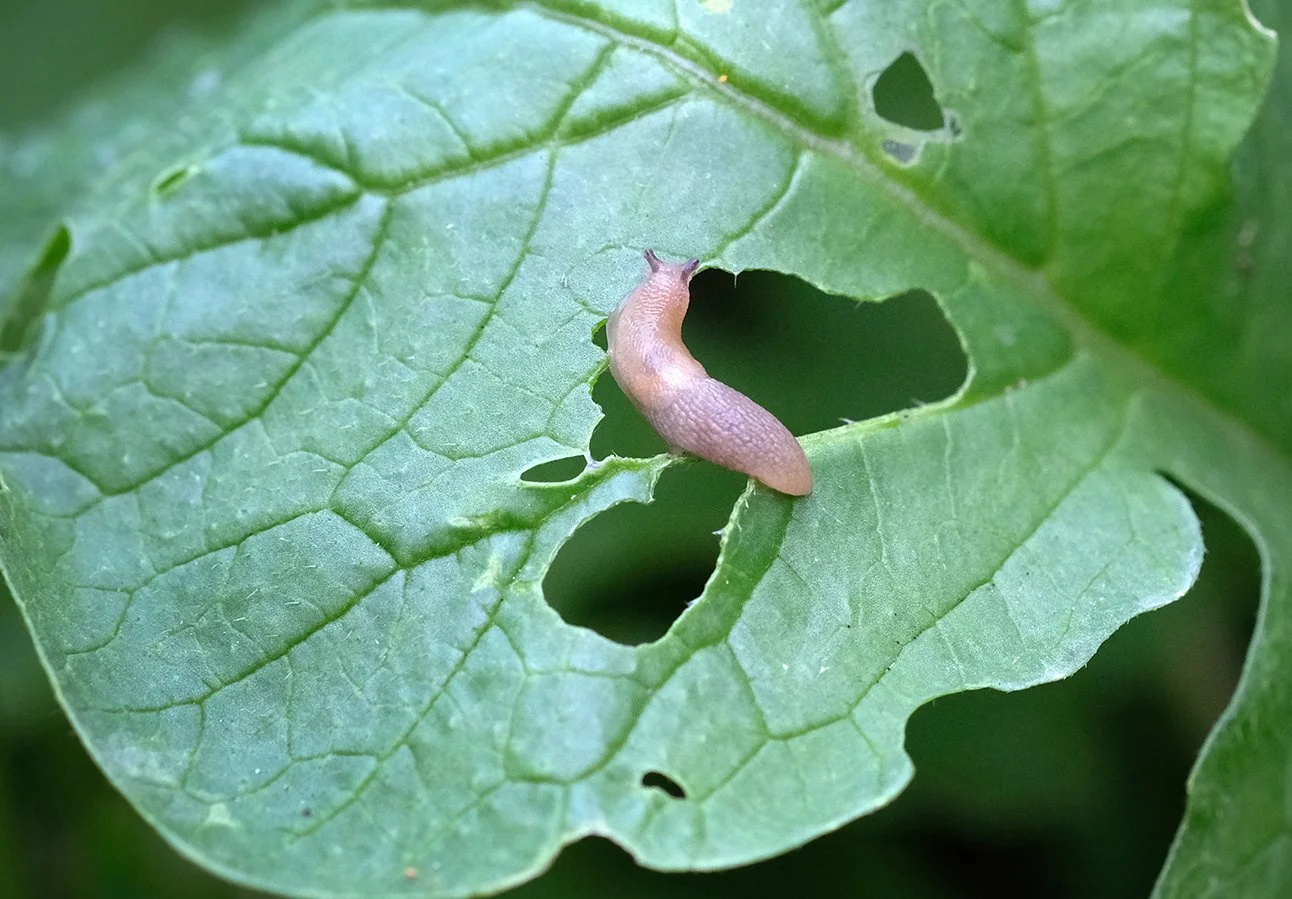Snails and Slugs
Slugs and snails are common garden pests in Southern California, particularly active during the cooler, damp months or in areas with excessive moisture. These slow-moving mollusks can cause significant damage to gardens and landscaping, feeding on a wide range of plants including leafy greens, flowers, fruits, vegetables, and seedlings.
While not a direct threat to humans, slugs and snails can destroy ornamental plants, landscaping, and garden beds overnight, leaving behind irregular holes in leaves, stems, and flowers. Their activity is typically accompanied by slimy mucus trails, which are an unsightly mess on walkways, patios, and siding.
Because they prefer to feed at night or during early morning hours, infestations can be difficult to catch early. If left unchecked, their populations can grow rapidly and become difficult to control without professional help.



Behavior
Snails and slugs are nocturnal and thrive in moist, shaded environments. They feed primarily on plant material, causing significant damage to gardens and crops. Their slime trail helps them move and retain moisture but also serves as a telltale sign of their presence. Both species are hermaphroditic, meaning they possess both male and female reproductive organs.
-
Active at night and during damp, cool conditions
Feed on leaves, flowers, and tender plant shoots
Leave behind a characteristic slimy trail
Hermaphroditic – both male and female reproductive organs
Can consume decaying plant matter, aiding in decomposition
Identification
Snails and slugs are soft-bodied mollusks that can be distinguished by the presence or absence of a hard, coiled shell. Snails carry a spiral shell for protection, while slugs lack a shell and rely on mucus to retain moisture. Both have a muscular foot for movement and two pairs of tentacles. One for sensory perception and the other for vision.
-
Snails: Spiral shell for protection
Slugs: No shell; rely on mucus to stay moist
Soft, slimy bodies with a muscular foot
Two pairs of tentacles – sensory and visual
Typically gray, brown, or black in coloration
Nesting
Snails and slugs do not construct typical nests but instead seek shelter in moist, dark areas like under rocks, mulch, and dense vegetation. During hot or dry periods, they enter a state of dormancy known as estivation to conserve moisture. They lay clusters of eggs in the soil, which hatch in 2 to 4 weeks.
-
Hide under rocks, logs, mulch, and dense vegetation
Prefer damp, shaded areas to prevent desiccation
Enter estivation during hot, dry weather
Lay clusters of translucent eggs in the soil
Eggs hatch in 2-4 weeks, with young immediately feeding on plants
Impact
Snails and slugs are considered major agricultural and garden pests due to their voracious feeding habits. They consume tender plant material, leaving behind irregular holes and slime trails. Additionally, they can transmit plant diseases and contaminate crops. In residential areas, they can damage ornamental plants, fruits, and vegetables.
-
Damage crops, ornamental plants, and seedlings
Irregular feeding holes in leaves and stems
Slime trails can attract other pests and harbor pathogens
Potential carriers of plant diseases and parasites
Can rapidly reproduce, leading to infestations


